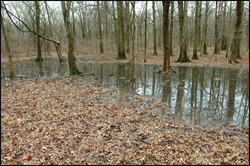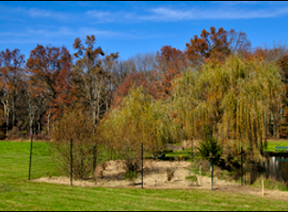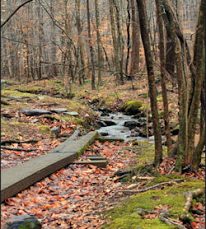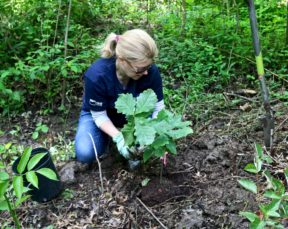

One of the vernal pools at GSWA’s Conservation Management Area (CMA) in Harding Township, NJ.
Early spring is one of the most dynamic times of year at GSWA’s Conservation Management Area.
As temperatures warm, the forest will start to come alive. Soon, plants will send new shoots out of the ground and all sorts of critters will leave their wintertime hiding places in search of food, mates, and other necessities.
In a couple of weeks, most of the springtime excitement at the CMA will be concentrated in places called vernal pools. If you have never heard the term “vernal pool” before, do not fret. You are not alone. Take a moment to dissect the phrase and you start to get a better sense of what it might means.
The word “vernal” is an adjective that describes anything related to or occurring in the springtime. For instance, here in the northern hemisphere, we mark an astronomical event called the vernal equinox as the true start of the spring season.
The meaning of the word “pool” is a little bit easier to suss out. Simply put, it refers to a small, and usually still, body of water.
Stick the words “vernal” and “pool” together and you get a term that describes a small body of water that is somehow tied to the springtime.
If you will pardon the pun, this simplistic definition of a vernal pool does not hold much water. A lot of other factors must be taken into account before it becomes possible to understand what a vernal pool really is. Here’s a more precise and scientific definition of the vernal pool phenomena offered up by the U.S. Environmental Protection Agency (EPA):
“Vernal pools are seasonal depressional wetlands that occur under the Mediterranean climate conditions of the West Coast and in glaciated areas of northeastern and midwestern states. They are covered by shallow water for variable periods from winter to spring, but may be completely dry for most of the summer and fall. These wetlands range in size from small puddles to shallow lakes…Beneath vernal pools lies either bedrock or a hard clay layer in the soil that helps keep water in the pool.”
That is a lot of information to process all at once, so here is a breakdown of some of the definitional highlights. Vernal pools are:
- seasonal — which means that they are wet part of the time, usually from winter to spring, and they are dry part of the time, usually from summer to fall.
- depressional — which means that they form around the low points on a landscape.
- shallow — which means that there is only a short distance between the surface of the water and the bottom of the pool.
It’s not obvious in the EPA definition, but one other feature of vernal pools that GSWA’s Director of Education and Outreach Hazel England likes to point out is that they are hydrologically isolated. That’s another way of saying that they are not permanently connected to other water bodies.
EPA also defines vernal pools as wetlands. That’s important too, not only because the description is technically accurate, but because the ecology of vernal pools are just as important as those of their larger marsh and swamp cousins.
If you want to learn more about vernal pools, come to GSWA’s Vernal Pool Exploration Hike on Friday, March 28. The hike takes place from 6 to 8 p.m. and will be led by Hazel England.


